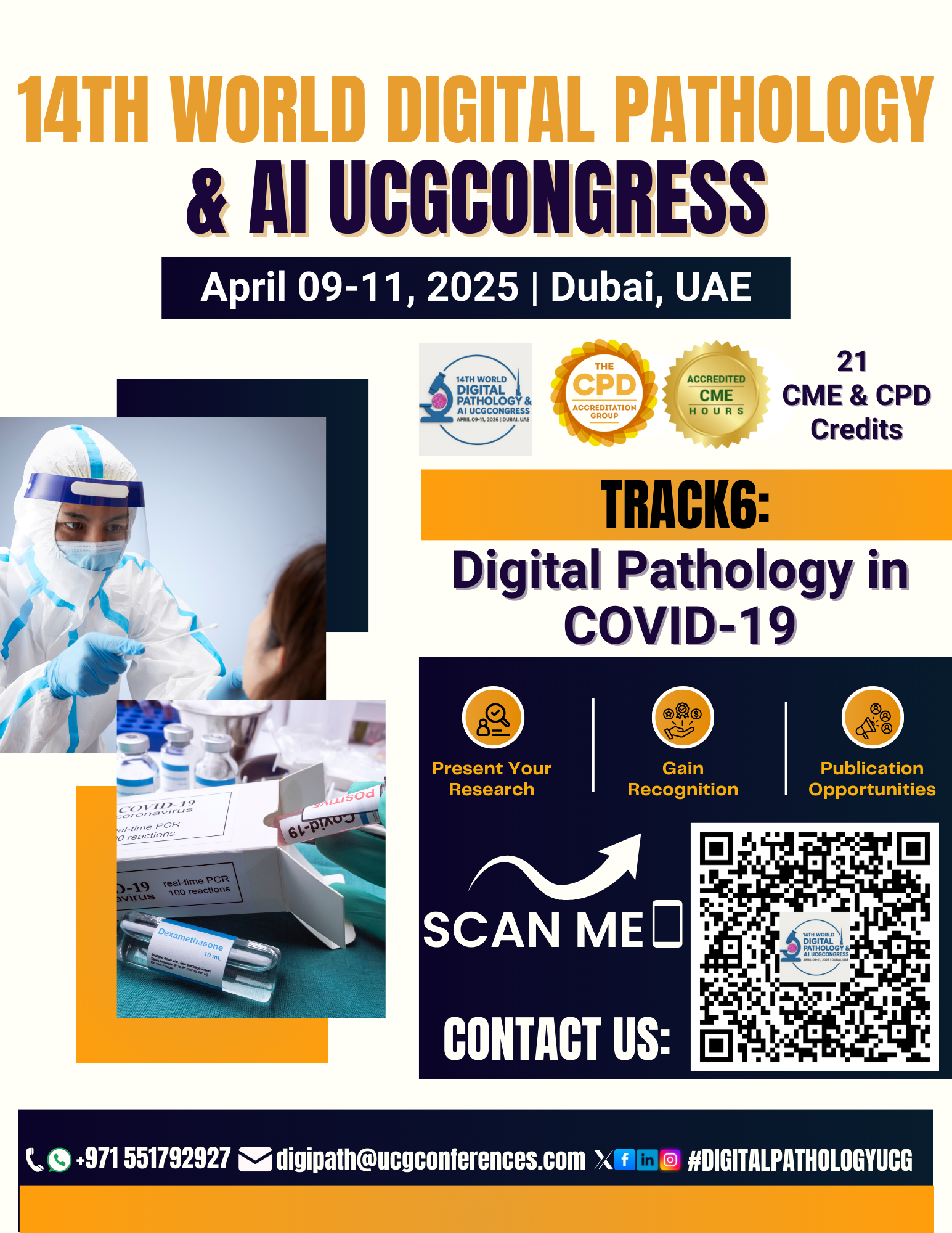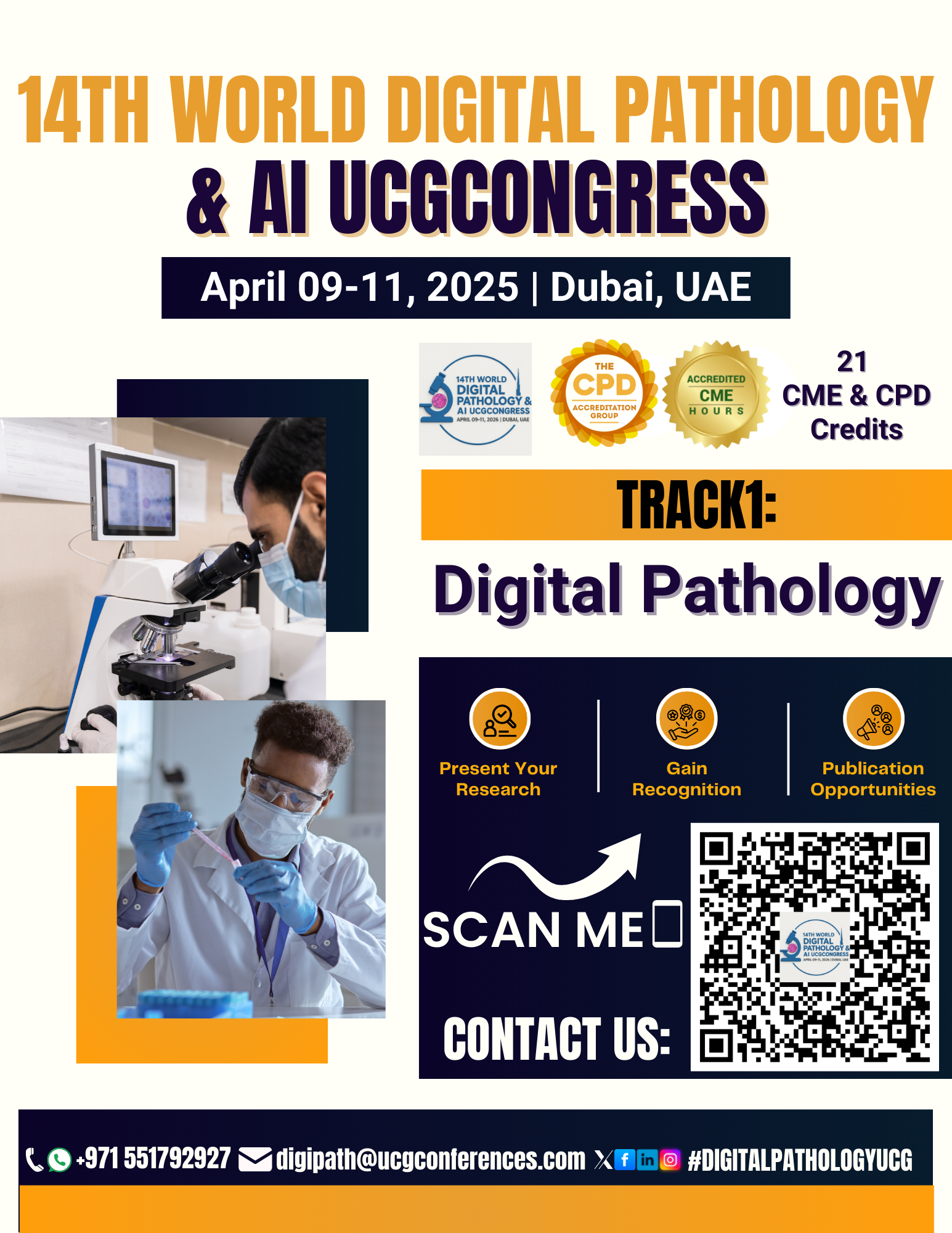



Sub track:-
Enhanced Image Quality Quantitative Analysis, Faster Turnaround Times,...

Sub track:-
Integration of Imaging Modalities, Advanced Image...

Track Overview:
The
COVID-19 pandemic has accelerated the adoption of digital pathology tools for
rapid, accurate, and remote diagnosis. This track will explore how digital
pathology has played a crucial role in understanding the pathophysiology of
COVID-19, diagnosing associated complications, and supporting global healthcare
efforts during the pandemic. We will also discuss the future potential of
digital pathology in handling emerging infectious diseases.
Key Topics:
Digital
Pathology for COVID-19 Diagnosis:
How whole slide imaging (WSI) and digital platforms have been used to identify
and monitor COVID-19-related tissue damage, such as lung pathology and vascular
changes.
Telepathology
in Pandemic Response:
The role of remote pathology services in providing diagnostic support,
especially in overwhelmed healthcare systems and during lockdowns.
AI
for COVID-19 Pathology:
Leveraging AI and machine learning algorithms to assist in the rapid
identification of COVID-19-related tissue abnormalities, improving diagnostic
speed and accuracy.
Post-COVID-19
Complications in Pathology:
Using digital pathology to study long-term tissue effects of COVID-19,
including fibrosis, inflammation, and vascular changes.
Global
Collaboration through Digital Pathology: How digital pathology has facilitated
cross-border collaboration and sharing of diagnostic insights, aiding research
and clinical decision-making during the pandemic.
Learning
Objectives:
Understand
how digital pathology has been applied in the diagnosis and study of COVID-19
and its complications.
Learn
about the role of AI in analyzing COVID-19 tissue samples and improving
diagnostic outcomes.
Discover
how telepathology has supported healthcare systems during COVID-19, ensuring
continuity of care and diagnostics.
Explore
the post-pandemic applications of digital pathology for studying long-term
COVID effects and future pandemic preparedness.
Target
Audience:
Pathologists,
clinicians, AI researchers, public health experts, and healthcare professionals
involved in the diagnosis, treatment, and research of COVID-19.
Speakers/Presenters:
Experts
in digital pathology and COVID-19 diagnostics
AI
researchers focused on COVID-19 applications
Public
health officials and global health collaborators
Conclusion:
This track will highlight the transformative role of digital pathology in combating COVID-19, from rapid diagnostics to post-infection research. It will also explore how these advancements can enhance future pandemic preparedness and improve healthcare delivery worldwide.